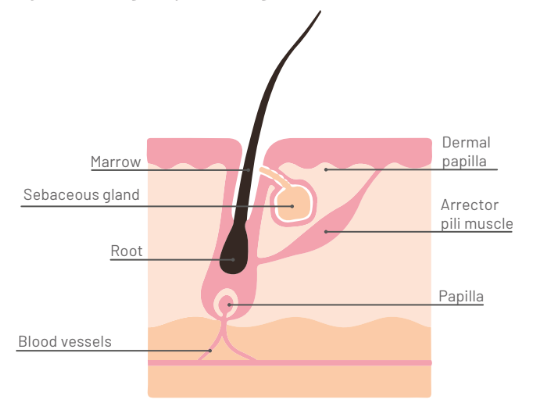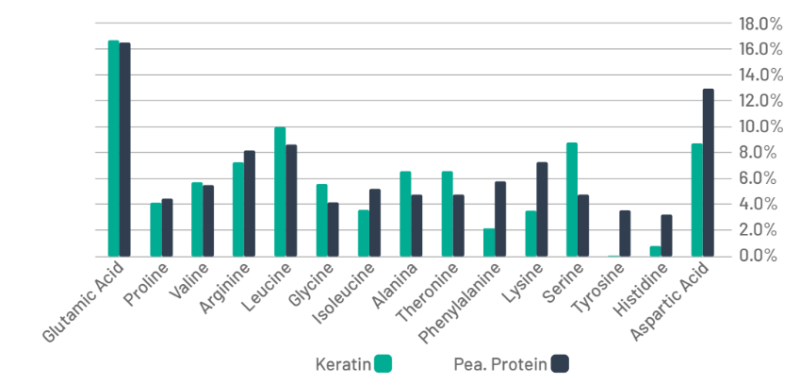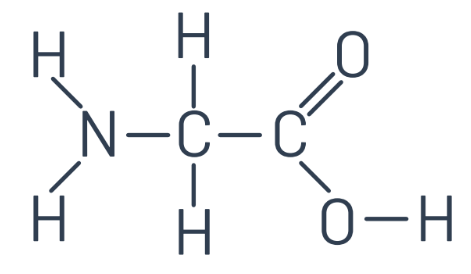Enhanced TDS
Knowde-enriched technical product data sheet
Identification & Functionality
- Carrier
- INCI Name
- Cosmetic Ingredients Functions
- Technologies
- Product Families
- Active Ingredients
Glycerin, Hydrolyzed Pea Protein, European Larch and Green Tea extracts, Glycine and Zinc.
Features & Benefits
- Benefit Claims
- Labeling Claims
- Benefits
- Reactivates the hair growth cycle.
- Helps to reduce hair loss.
- Contributes to nurture the hair follicle.
- Stimulates cell proliferation of hair follicle stem cells.
- Cell anti-apoptosis effect (cell death).
- Increases hair density on the scalp.
- Use Encapsulated Active Ingredients and Ensure
- Stability improvement
- Increased compability in the formulation
- Increased skin permeation
- Reduced dose
- Increased solubility
- Prolonged release
- Increased effectiveness
- Occulsion of odors
- Use of sensitive active ingredients (without refrigeration)
- Nanovetores Encapsulation Technology
- Active Ingredient Protection against oxidation resulted from interaction with external environment and other components of the cosmetic formulation.
- Monodispersity, that ensures control of the particle size, providing adequate permeation to its proposed action.
- Secure particles larger than 200nm, biocompatible and biodegradable.
- Greater Permeation on the contact surface due to the small size of the capsule.
- Surface Charge Control of the particle, promoting greater affinity with the contact surface.
- Water Base Active ingredients are manufactured without the use of organic solvents, ensuring safety for users and the environment.
- Product Background
NV R-Growth Hair is a powerful active ingre- dient that quickly reactivates a new hair growth cycle and reduces hair loss, in addi- tion to strengthening hair strands and replacing essential vitamins and amino acids for their growth.
The blend can be incorporated into formulations for cosmetics, such as shampoos, conditioners, lotions, and aqueous serums. The product's natural features and non-existent toxicity allow its daily use, delivering effectiveness safely.
Hair
Hair is basically composed of keratin, a protein characterized by its high sulfur con- tent derived from cystine. This protein forms a network of crossed links through disulfide bonds, giving the hair a certain mechanical and chemical resistance (Figure 1). Thus, many hair morphological structures vary their physical and chemical characteristics because of the content of sulfur bridges.

Figure 1: Illustration of control over the surface charge of the capsules, active ingredients for hair products have the capsules with a positive surface charge to be attracted to the hair's natural negative charge.
Hair Cycle
The hair follicle is an anatomical structure normally composed of a hair strand, and its main function is hair growth. Figure 2 shows the structure of the skin hair follicle.
To produce new hair, the existing follicles go through a cycle, divided into three phases: anagen (growth), catagen (transition) and telogen (fall), as shown in Figure 3. This cycle takes from 2 to 7 years.
Anagen is the hair's active phase or growth phase. Dead cells are excreted out of the hair bulb as the hair strand grows back. This phase can last from 2 to 6 years.
After the growth phase, the hair enters the transition or resting phase (catagen). During this phase, the hair is kept in the hair follicle, however the growth phase is suspended, and the hair root is shed. This phase lasts around 2 to 3 weeks.
Finally, the follicle enters its resting stage, the telogen phase, where the hair is shed and falls from the hair follicle. This phase lasts around 3 months, and the follicle remains inactive during this time. Then, the cycle is restarted by the anagen phase again.

Figure 2: Structure of the hair follicle.

Figure 3: Representation of the hair cycle.
Hair Loss and Stem Cells
A scalp has an average of 110,000 hair follicles that are constantly growing and falling. When there is an imbalance between growth and fall, hair loss is accentuated, and baldness begins. This phenomenon is called alopecia. In this hair loss process, the telogen phase is prolonged and the transition to the anagen phase becomes increasingly difficult.
This phenomenon occurs because hair follicle stem cells (ORSc - outer root sheath cells) are less productive and less adapted to improve the quality of the matrix that supports hair growth in the hair follicle. Moreover, fibro- blasts located in the dermal papilla (HFDPc - Human Hair Follicle Dermal Papilla Cells) are less able to communicate with stem cells, causing the matrix renewal to fail, making the anagen phase slower and hair loss occurs daily.
Applications & Uses
- Markets
- Applications
- Application Format
- Hair Care Applications
- Skin Care Applications
- Use Level
- 2.0 - 10.0
- Usage
Emulsions in general, gels, cream gels, creams, serums, conditioners, and shampoo.
Properties
- Physical Form
- Appearance
- Slightly viscous liquid
- Odor
- Characteristic
- Typical Properties
Value Units Test Method / Conditions pH Value 4.5 - 6.5 - - Relative Density 0.9 - 1.1 g/ml - pH Stability 4.5 - 8.0 - - - Compatibility
Emulsions in general, gels, cream gels and serums.
- Incompatibility
Ethanol and other organic solvents.
Technical Details & Test Data
- Blend
Green Tea Extract
Camellia sinensis is a plant cultivated in South Asia, including China, India, Japan, Thailand, Sri Lanka, and Indonesia.
Green tea extract is a source of bioactive flavonoids with potent antioxidant activity. It fights free radicals responsible for aging and protects against damage caused by exposure to UV radiation. It also has anti-inflammatory action, significantly improving skin microcirculation. It acts as an astringent, promoting cleanliness and balance for oily hair.
In addition, the extract contains epilagocate- chin-3-gallate (EGCG), an important polyphenol that stimulates hair growth and reduces follicular cell death, acting on the dermal papilla cells that are the source to hair follicles.
Hydrolyzed Pea Protein
Pea protein derived from the Pisum sativum plant, a legume rich in fiber, low in fat and with an extraordinary amino acid profile, especially rich in lysine, a key amino acid in the synthesis of collagen and carnitine. Recently, several peptides and proteins have been developed to accelerate and facilitate the delivery of bioactive molecules to the skin, hydrolyzed proteins rich in arginine, having remarkable effects on permeation. Natural bioactive peptides when applied topically can contribute to reversing signs of aging and photodamage to the skin and hair. They play a significant role in anti-a- ging cosmetics, with remarkable skin redensification, increased synthesis of collagen and elastin, glycosaminoglycans, proteoglycan and fibronectin, noticeably improving the healing processes.
Considered the new source of beauty, proteins, thanks to their natural affinity with the keratin present in the skin and hair, repre- sent the perfect building block in the formulation of gentle, biodegradable, multifunctional cosmetic products. The hydrolyzed pea protein binds to the surfaces forming a highly hydrated layer, which makes it difficult for water to diffuse and evaporate, maintaining hydration (Figure 4). The hydrolyzed pea protein is an excellent source of plant-derived amino acids as can be seen in Figure 5. It is not derived from genetically modified organisms (GMO), gluten-free, generating a "safer perception" for end consumers.

Figure 4: Protein-based film formation characteristic of pea protein.

Figure 5: Comparison of the amino acid profile of keratin and pea protein.
Glycerin
Glycerin is a trialcohol that can be found in vegetable oils of coconut, palm, soy, and olive. The uses and benefits of glycerin are meant for moisturizing and emollient, lubricating properties.
Glycine
Glycine is one of the 20 amino acids responsi- ble for protein synthesis, and its formula is shown in Figure 6.
Glycine is relevant to the cosmetics industry because of its role as a radical catalyst in a new oxidizing system developed for hair coloring products. Furthermore, it assists in hair growth and proper functioning of the nervous system, protecting the body from nervous disorders, preventing hair loss.

Figure 6: Molecular structure of glycine.
Zinc
Zinc (Zn) is an essential mineral for the development and proper functioning of the body. This mineral participates in the cell renewal process, metabolizing vitamins and proteins that are essential for the health of the hair follicle, favoring the production of enzymes linked to growth of hair strands. In addition to these benefits, Zinc has anti-inflammatory action and influences the balance of sebum production in the sebaceous glands, providing health to the scalp and contributing to the prevention of hair diseases such as dandruff.
European Larch Extract
Larix europaea is a coniferous tree that grows to about 25-45 m in height and its trunk can reach up to 1 m in diameter. The species requires light and drier environments for its growth.
The benefits of this plant for cosmetics are quite relevant. European Larch extract activates the division of ORSc and stem cells that have an important role in initiating the anagen phase of hair growth. The extract also has dihydroquercetin-glucoside (DHQG) in its composition, and its action induces the viabi- lity, proliferation, and gene expression of HFDPc, which is an essential active for hair growth.
NV R-Growth Hair has biological activators, such as DHQG, which combined with the active ingredients, favor the metabolism of hair growth and strengthening.
Storage & Handling
- Storage
Keep in a well-ventilated place, away from light and heat. Shake before use and add to formulation below 40°C.